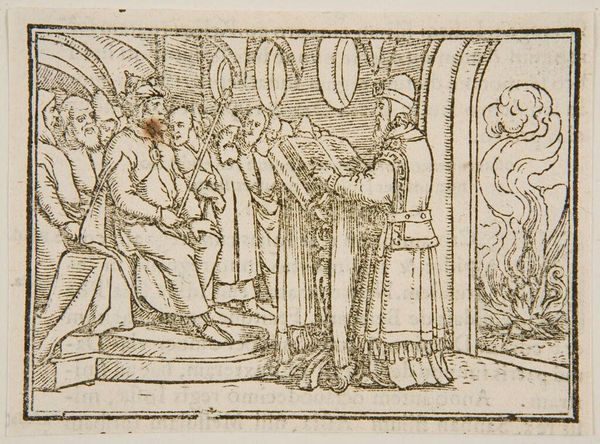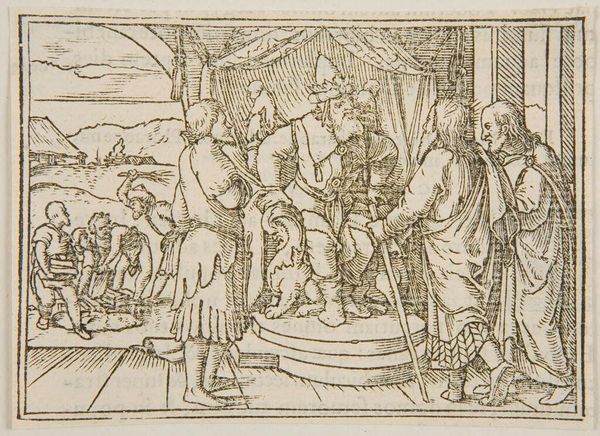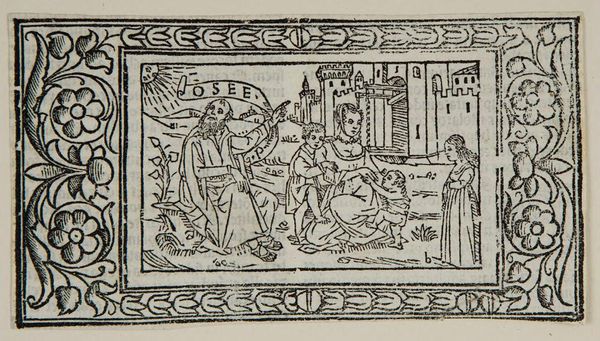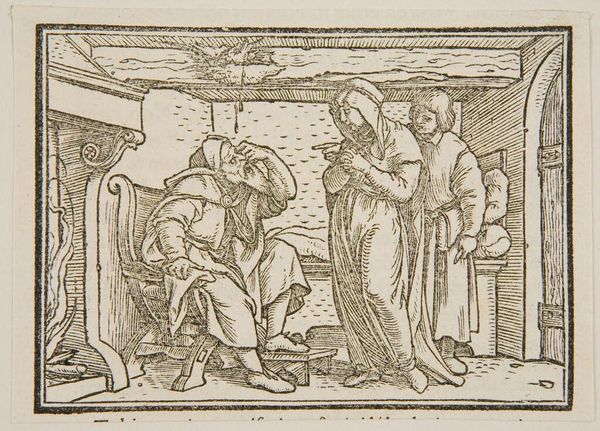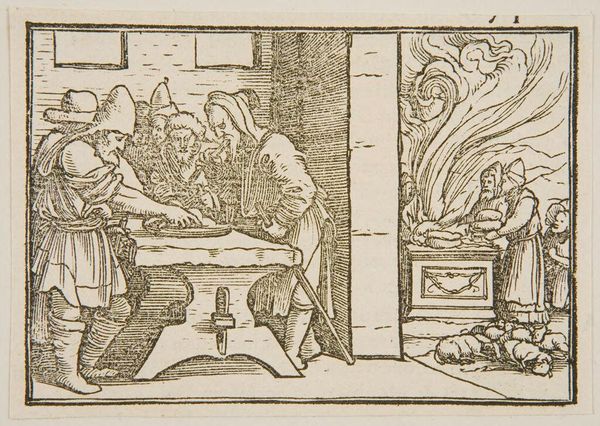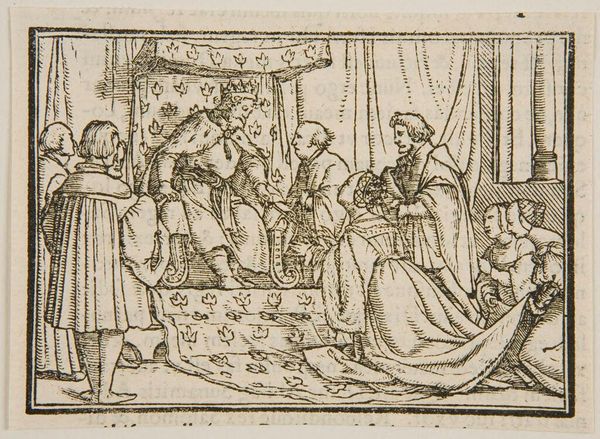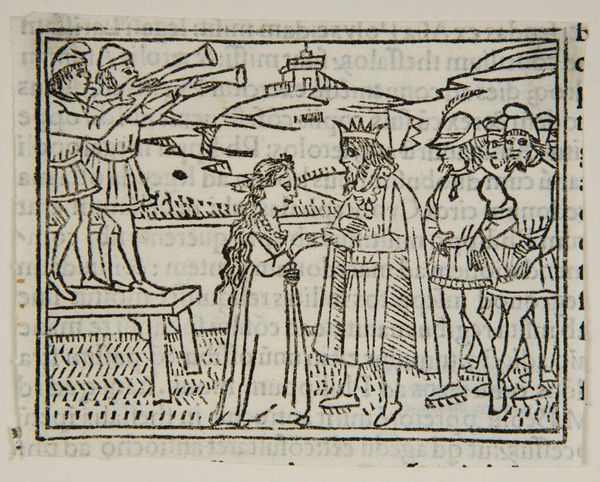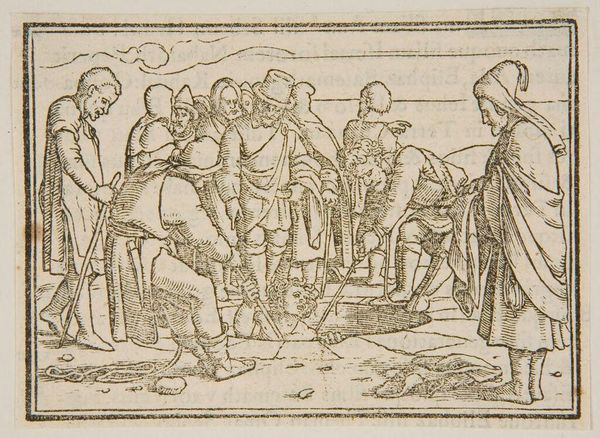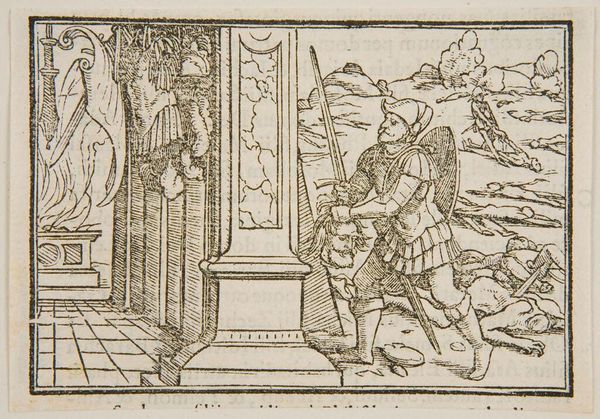
Copyright: CC0 1.0
Curator: This is "Deut. IV" by Hans Holbein the Younger. The stark contrast of the woodcut immediately grabs you, doesn't it? Editor: Absolutely. The texture created by the dense lines and the scene itself feels heavy, almost oppressive. Who are these figures? Curator: Holbein depicts Moses admonishing the Israelites for worshipping idols. He’s reminding them of God's commandments. The print was intended as visual propaganda for reformist ideas about images and idolatry. Editor: Ah, that explains the almost confrontational stance of Moses. It's a powerful statement on religious authority, framed by the social and political upheavals of the time. Curator: Indeed, and the use of woodcut, a readily accessible medium, would have allowed for its widespread dissemination and contributed to the debates about image worship. Editor: I see. So, a blending of craft and political messaging, reflecting a challenge to existing hierarchies. Curator: Precisely. Holbein was exceptionally skilled at utilizing the material qualities of printmaking to further Reformationist arguments. Editor: Seeing this work helps reveal the intersection of religion, power, and artistic production in the early 16th century. Curator: A potent reminder of how art becomes embroiled in the urgent social dialogues of its day.
Comments
No comments
Be the first to comment and join the conversation on the ultimate creative platform.
